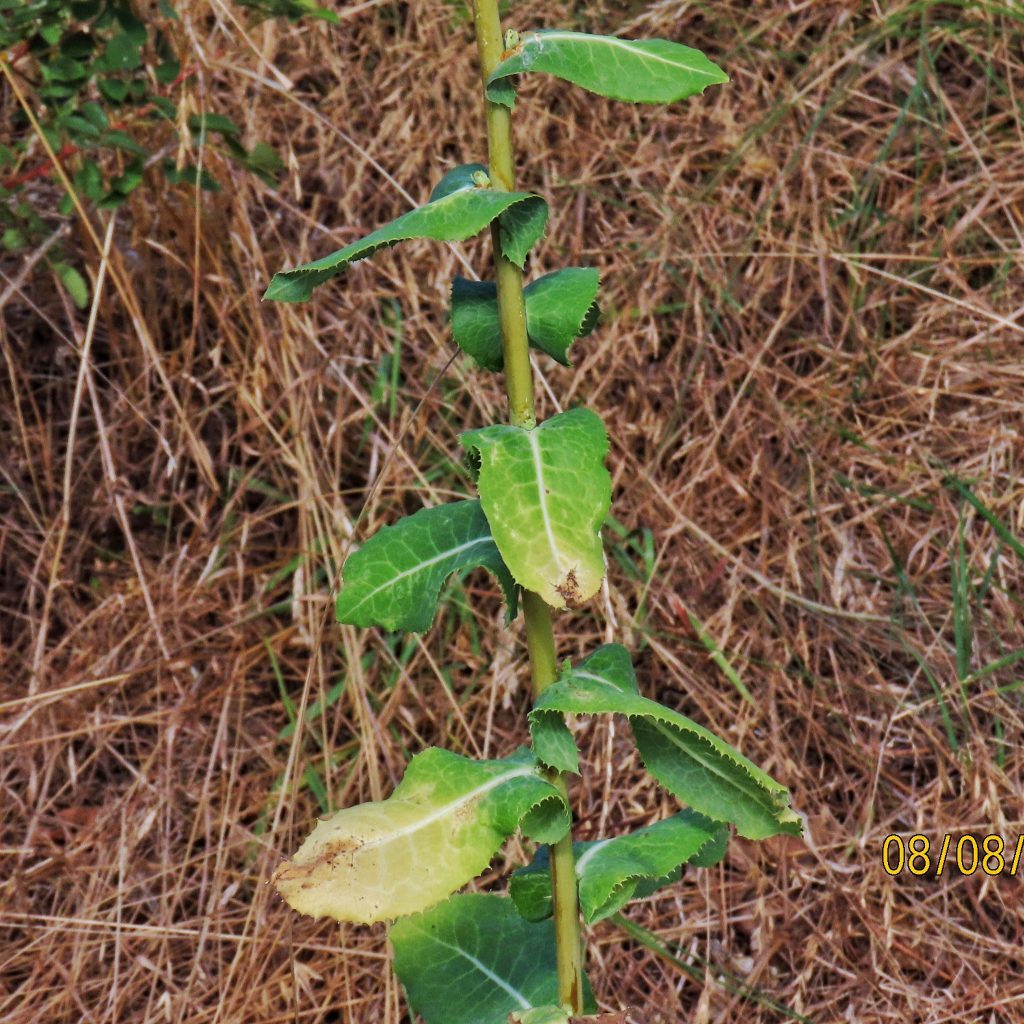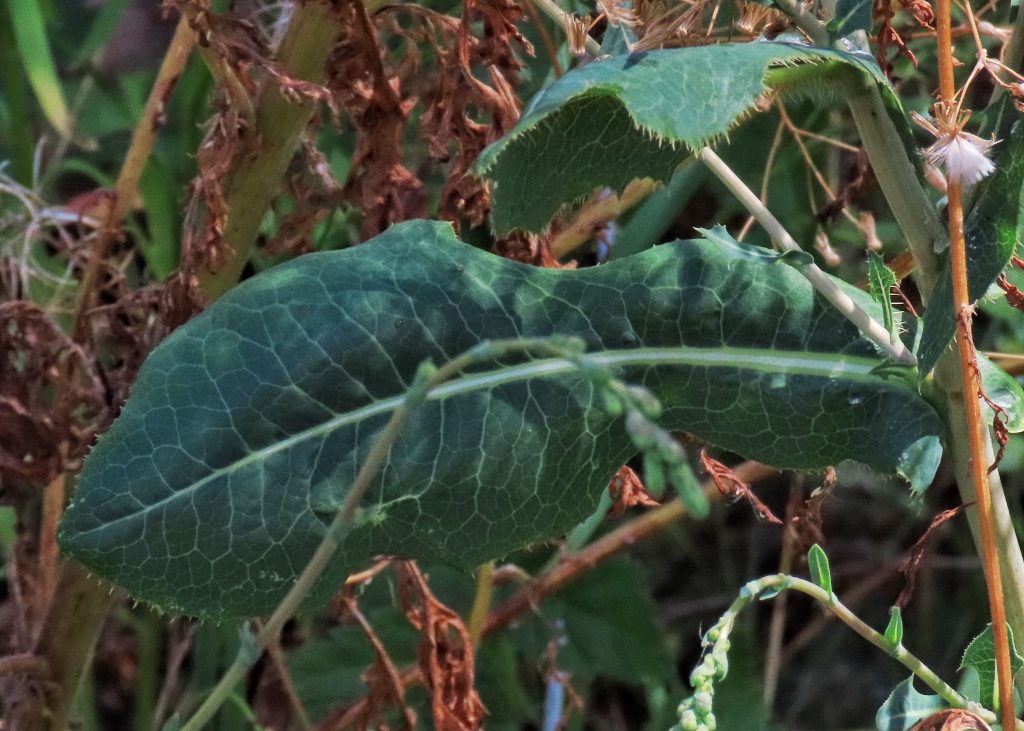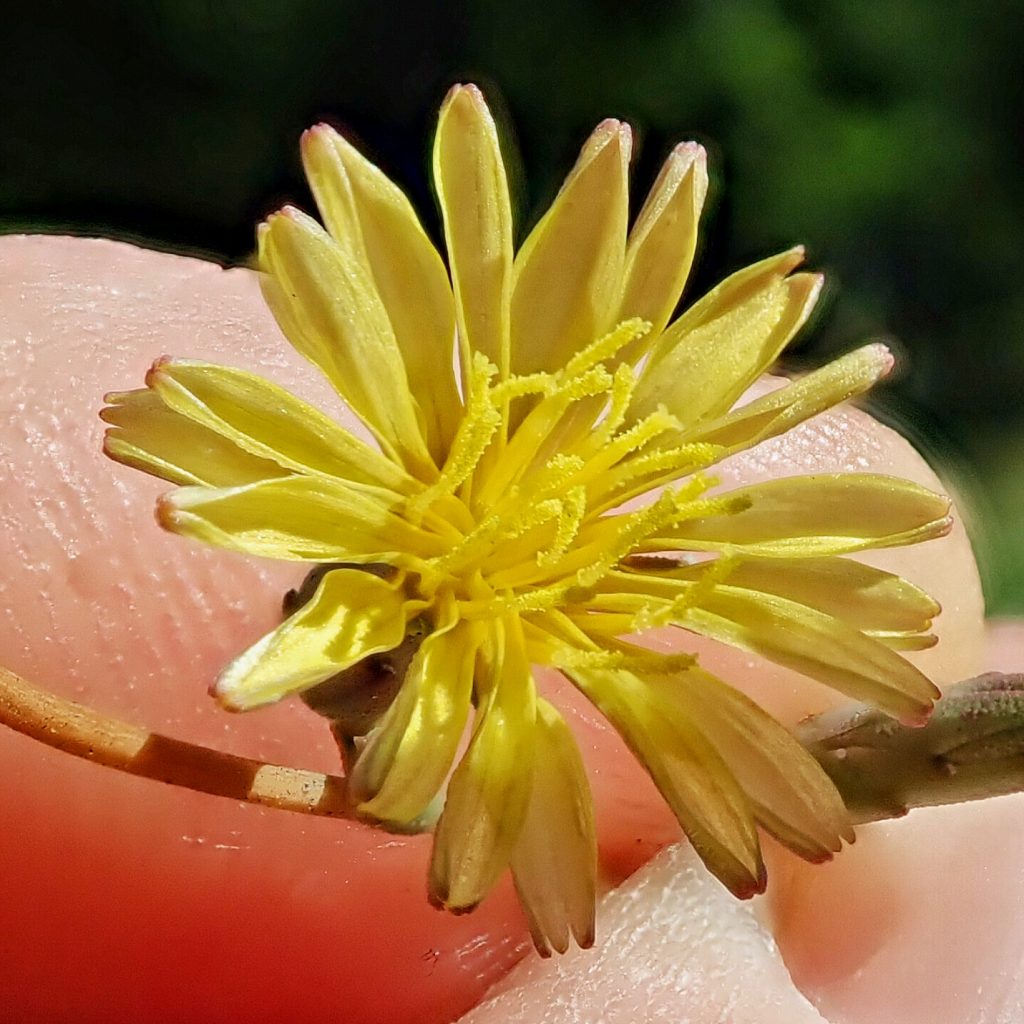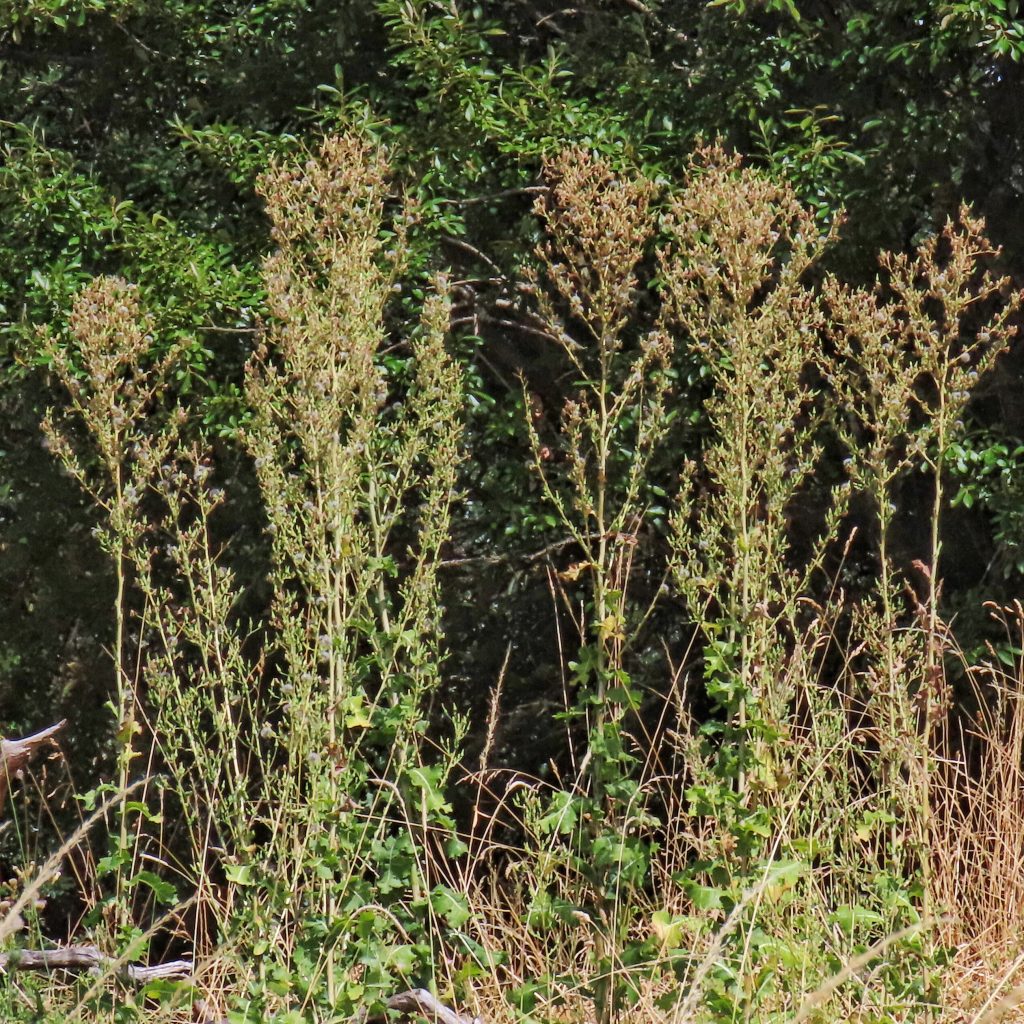
Once you have identified this plant you will see it everywhere. It is a common roadside plant, often growing in the cracks alongside highways, and can be easily identified even at freeway speeds. It grows up to 6’ tall, with a single, somewhat woody stem. Clasping leaves are large and oblong, toothed, and often irregularly lobed, with a prominent white midvein that has spines on its ventral surface. The light yellow, dandelion-like flowers fade quickly and form beaked seed pods with tufts of white hairs (pappus) at the tip. Like all members of the Chicory tribe (Cichorieae) they have milky latex sap.
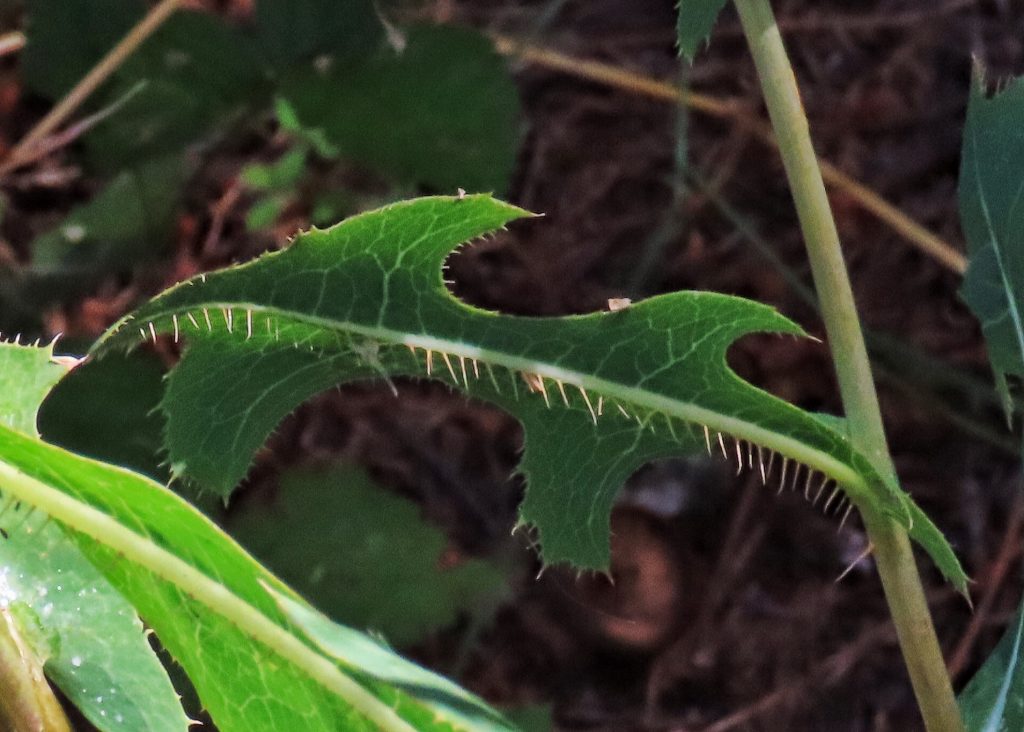
This plant has accumulated several colloquial common names. One name applied to this plant, and several others in the genus Lactuca, is opium lettuce, because of the mild sedative and analgesic properties of the sap. Another is compass plant, because the basal leaves will torque to orient to the sun in such a way as to point north and south.
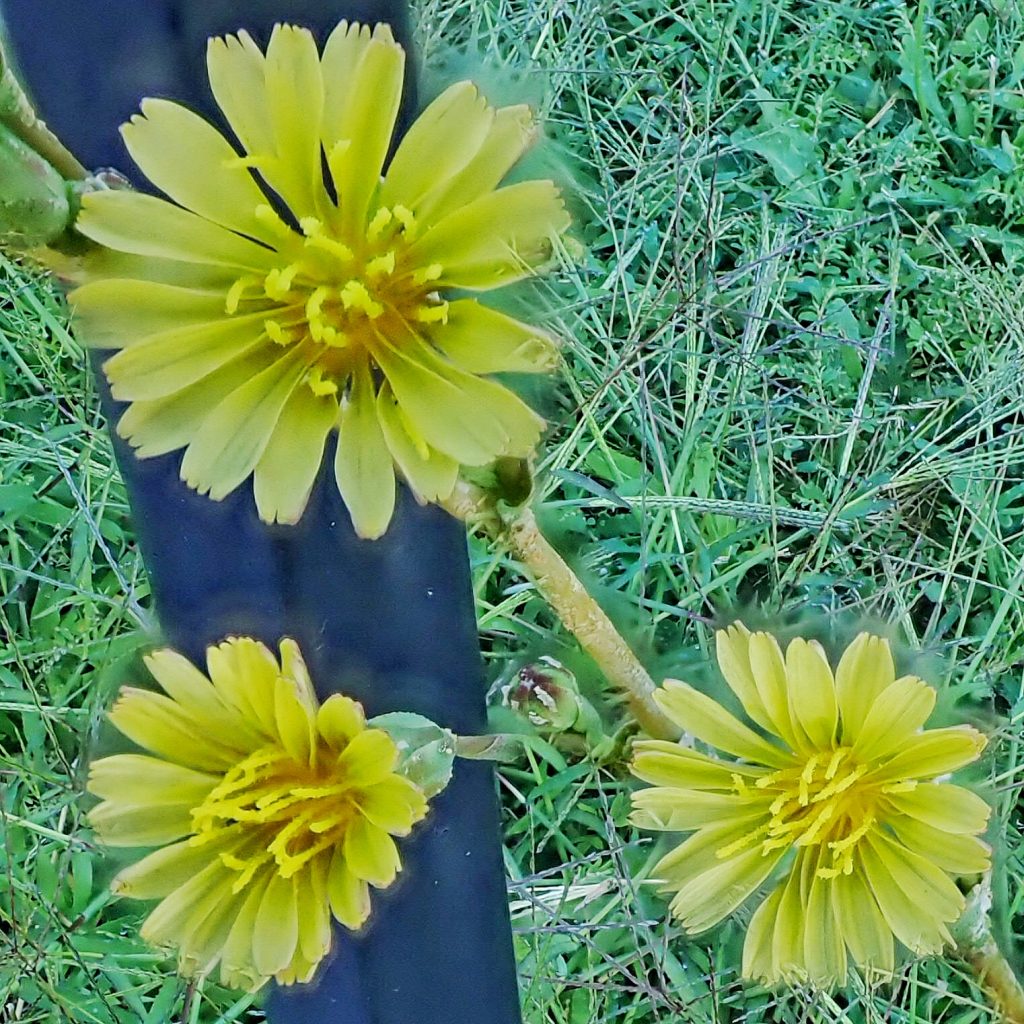
This Eurasian native was first found in North America around 1860, and has since spread throughout the US. It is most common in dry, disturbed ground, but may be found in all but the wettest and shadiest habitats. It is biennial, growing a basal rosette by the fall of its germination year, and a flowering stalk the following spring.
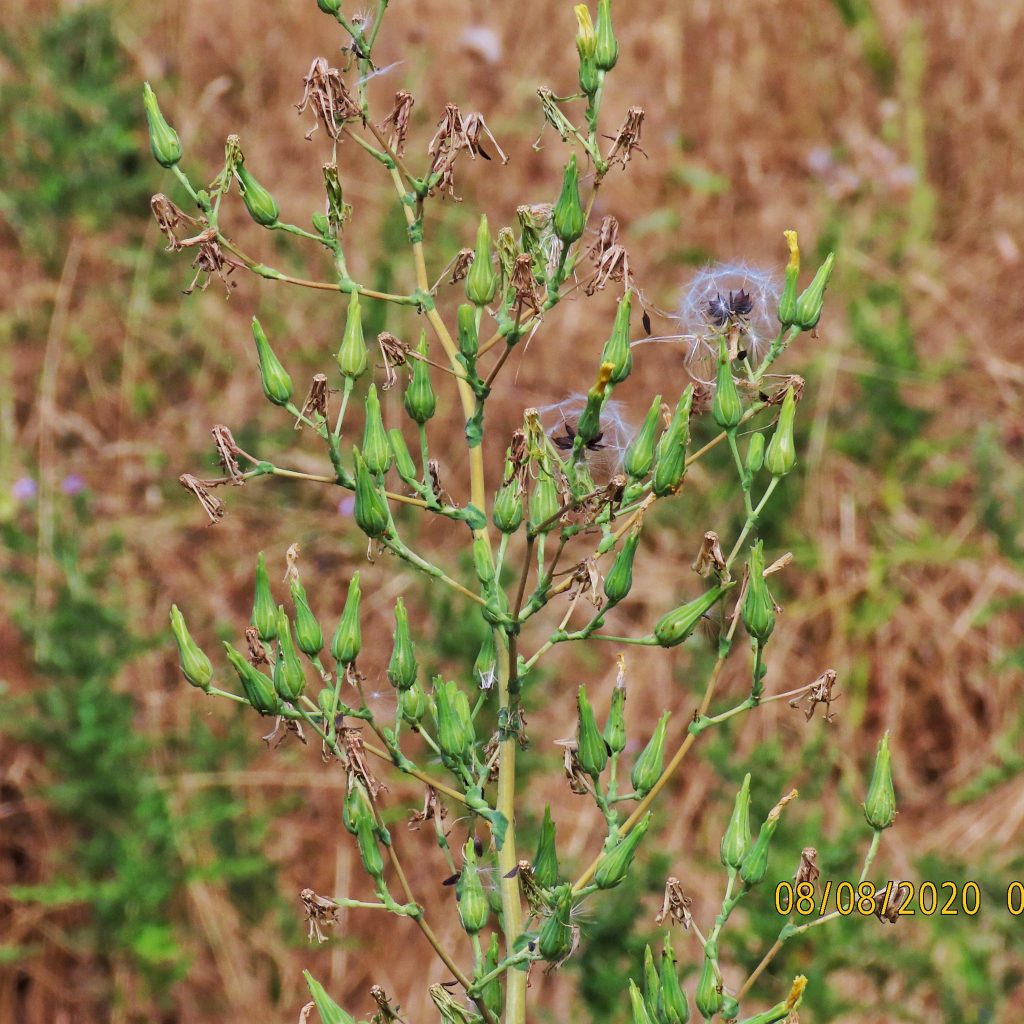
Lactuca serriola | Prickly Lettuce | Wildflowers of the Pacific Northwest
https://www.oardc.ohio-state.edu/weedguide/single_weed.php?id=63
https://www.illinoiswildflowers.info/weeds/plants/prickly_lettuce.htm
Size- Up to 6’
Habitat- Favors dry, disturbed ground, but can be found in many habitats
Range- Region wide
Blooms- All spring and summer
